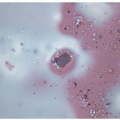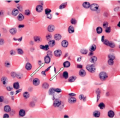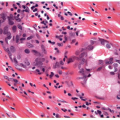Introduction
The thyroid gland is a butterfly-shaped gland in the anterior inferior neck. It is readily palpable and even visible in the slender patient. It is a source of common pathology. The most common problems that develop in the thyroid include:
Hypothyroidism
Hyperthyroidism
Thyroiditis
Goiter
Thyroid nodules
An estimated 27 million Americans have thyroid disease, and more than half are undiagnosed. Women are at the greatest risk, developing thyroid problems seven times more often than men. A woman faces as high as a one-in-five chance of developing thyroid problems during her lifetime, a risk that increases with age and for those with a family history of thyroid problems [1, 2].
The majority of patients with hypo- or hyperthyroidism have functional disease that is not the subject of biopsy. These patients are diagnosed with biochemical tests and treated accordingly. However, knowledge of the functional status of the thyroid is critical to the correct interpretation of biopsies, since the changes that underlie the functional alterations impact on the structure of the gland.
The majority of biopsies are used to classify nodules in the gland. These may arise in the setting of nodular goiter or thyroiditis, or they may be solitary neoplasms.
Thyroid nodules are extremely common in the general population [3]. The prevalence varies in different populations and with the methods used to detect nodules. Nodules increase in incidence with age; they are more common in women and in populations with iodine deficiency. It has been estimated that 2% to 6% of the population has a nodule identified on palpation, and variable rates from 19% to 67% have a lesion that is found with ultrasound [4, 5]. Autopsy studies report thyroid nodules in up to 65% of cases [4]. Multiple nodules are more common than solitary nodules, and the incidence of malignancy may be lower in patients with multiple nodules than in solitary nodules, but
this appears to be true only outside the United States and in areas of iodine deficiency [6].
this appears to be true only outside the United States and in areas of iodine deficiency [6].
The incidence of thyroid cancer has increased substantially in many countries during the past two decades [7, 8, 9]. Indeed, several studies have shown that up to one-third of thyroid glands at autopsy contain an incidental papillary microcarcinoma [10, 11]; however, most of these lesions are and will remain asymptomatic and therefore do not require aggressive management. The increase in incidence has not been associated with a concomitant increase in mortality, proving this point. The implementation of cancer screening in South Korea provided evidence that overdiagnosis of thyroid cancer due to aggressive ultrasonographic screening is a cause for concern [12]. Therefore, the role of biopsy should be clearly identified as of relevance for clinically significant pathology.
Stay updated, free articles. Join our Telegram channel

Full access? Get Clinical Tree







